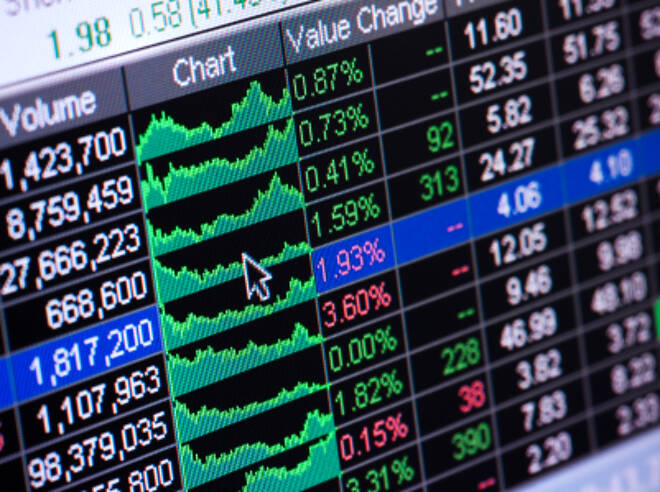Advertisement
Advertisement
US Stocks Retreat on Trade Deal Uncertainty, but Losses Dampened by Light Holiday Trade
By:
The price action suggests investors are still trying to grasp the concept of a trade deal done in phases. However, if investors were really skeptical about the matter, the markets would’ve sold off a lot harder. This indicates they may be comfortable with the idea that both sides are still talking.
The major U.S. equity indexes settled slightly lower on Monday in a generally lackluster trade due to the U.S. Columbus Day holiday. Although it was not an official U.S. bank holiday, several banks were closed as well as the Treasury market. The price action suggests many of the major investment firms took advantage of a long-holiday weekend.
In the cash market on Monday, the benchmark S&P 500 Index settled at 2966.15, down 4.12 or -0.14%. The blue chip Dow Jones Industrial Average finished at 26787.36, down 29.23 or -0.11% and the technology-based NASDAQ Composite closed at 8048.65, down 8.39 or -0.11%.
Stocks Pause
U.S. stocks paused on Monday after posting gains the three previous sessions as a lack of clarity over “phase one” of a U.S.-China trade agreement weighed on investor sentiment, while investors enjoyed an “unofficial” holiday, ahead of the start of the third-quarter earnings season.
Investors were upbeat at the start of the futures market session on Sunday after the S&P 500 and Dow Jones indexes ended Friday with their first weekly gain in a month and President Trump signaled the two economic powerhouses had taken a major step in easing the back-and-forth tariffs measures that have hammered global growth this year.
However, prices quickly retreated after a Bloomberg News report said that Chinese officials would like to continue trade talks before signing phase one of the deal and moving on to phase two.
Additionally, gains were capped after President Trump acknowledged that the agreement could still collapse, while Treasury Secretary Steven Mnuchin said on Monday he had “every expectation” that if a U.S.-China trade deal was not in place by December 15, additional tariffs would be imposed.
The price action suggests investors are still trying to grasp the concept of a trade deal done in phases. However, if investors were really skeptical about the matter, the markets would’ve sold off a lot harder. This indicates they may be comfortable with the idea that both sides are still talking.
Empire State Manufacturing Index Edges Higher
It was a light day on the data front. There were no early session reports, but the Empire State Manufacturing Index was released at 20:00 GMT. The report was posted about 18 hours earlier than expected, due to “technical difficulties”, according to a Fed spokeswoman.
The New York Federal Reserve’s Empire State business-conditions index showed slight improvement in October. The report showed that a rebound in sentiment pushed the headline Empire State Index up to 4 in October from 2 in the prior month. Economists were looking for a 0.8 reading, according to Econoday.
The Empire State index is closely watched as one of the first indicators of a month’s manufacturing activity. Recent reports have been flat as regional manufacturing has been impacted by the trade war between the United States and China, the sluggish global economy and the strong U.S. Dollar.
About the Author
James Hyerczykauthor
James Hyerczyk is a U.S. based seasoned technical analyst and educator with over 40 years of experience in market analysis and trading, specializing in chart patterns and price movement. He is the author of two books on technical analysis and has a background in both futures and stock markets.
Advertisement
